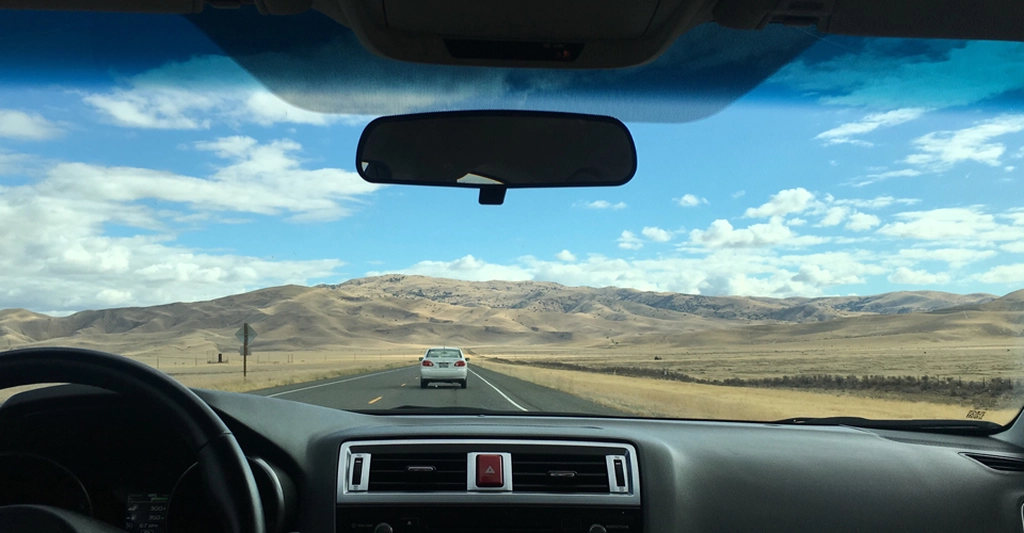We all know how important it is to keep the outside of our windshields spotless. But how often do you think about cleaning the inside? Surprisingly, the inner glass can accumulate just as much grime, and it has a direct impact on your visibility, especially during night driving or when the sun hits the glass at the wrong angle.
From mysterious hazy films to fingerprint smudges and pet nose prints, a dirty windshield interior can be frustrating and even dangerous. Here’s how to clean it properly, why it gets so dirty, and what you can do to keep it cleaner for longer.
Why the Inside of Your Windshield Gets So Dirty
That cloudy haze that builds up inside your windshield isn’t just dust. One of the biggest culprits is a process called off-gassing. This happens when plastics and synthetic materials used in your dashboard, seats, and trim release chemical vapours over time especially under heat. These vapours cling to the glass as a sticky film.
Other common contributors include:
- Smoking inside the car
- Children’s fingerprints
- Pet drool and nose prints
- Use of oily dashboard protectants
- Environmental contaminants (e.g., coastal salt, city smog)
If you’ve ever noticed that your windshield looks perfectly fine during the day but suddenly becomes a foggy mess at night when headlights hit it that’s the haze doing its work.
Tools and Products You’ll Need
Before diving into the cleaning process, make sure you’re using the right tools. Avoid paper towels and household glass cleaners they can cause streaks or even damage tinted glass.
Recommended cleaning materials:
- Multiple clean, lint-free microfiber cloths
- Automotive glass cleaner (alcohol-based or foam formula; avoid ammonia-based cleaners)
- Rubbing alcohol or distilled white vinegar for degreasing
- A glass-safe scrubbing pad or microfiber-covered reach tool (especially helpful for reaching deep corners)
- Optional: a spray bottle with a homemade glass solution (more on this below)
Step-by-Step: How to Clean the Inside of Your Windshield Like a Pro
1. Protect Your Dashboard
Start by covering your dashboard with a towel or cloth to prevent cleaner drips from staining the material or reflecting into your field of vision.
2. Remove Loose Dust and Debris
Wipe the windshield with a dry microfiber cloth to get rid of surface dust and grime. This helps prevent scratching during deeper cleaning.
3. Degrease with Rubbing Alcohol or Vinegar
Pour a bit of rubbing alcohol or white vinegar onto a clean cloth. Wipe the entire surface using circular motions to cut through oily buildup. This step is key if you’re dealing with heavy haze or off-gassing residue.
If you live near the ocean or in a high-humidity area, vinegar works particularly well to dissolve salt and film left by moisture.
4. Spray and Wipe with Glass Cleaner
Apply your glass cleaner directly onto a fresh microfiber cloth (not onto the glass to avoid overspray). Wipe in circular motions, then follow with vertical and horizontal strokes to catch any missed spots. Swap out cloths frequently as they collect residue.
5. Buff with a Dry Microfiber Towel
Using a clean, dry towel, buff the glass to a streak-free finish. A reach tool can help you get to tight corners or the base of the windshield near the dashboard.
6. Foam Cleaner for a Flawless Finish (Optional)
Foam-based glass cleaners are ideal for the final pass. Spray a line of foam across the middle section and wipe from top to bottom using a clean towel. Foam tends to stay in place longer than liquid, giving you more control and reducing streaks.
7. Inspect from Outside
Step outside your vehicle and check your work from different angles especially in natural light. Often, hazy patches or smears are only visible from certain perspectives. Redo any sections as needed.
DIY Glass Cleaner: Safe & Effective Recipes
If you prefer to mix your own solution, try these safe and effective combinations:
- Option 1: 50% distilled water + 50% rubbing alcohol + a capful of white vinegar
- Option 2: 70% water + 15% glass cleaner + 15% alcohol
Avoid using ammonia-based products as they can damage tinted windows, vinyl, and leather interiors.
Pro Tips for a Cleaner Windshield That Lasts Longer
- Always clean your windshield last when washing your car. This prevents re-contaminating it with product residue.
- Park in the shade or indoors to slow down the off-gassing process and reduce buildup.
- Use windshield sunshades and crack the windows slightly when parked (weather permitting) to improve ventilation.
- Avoid using dashboard conditioners with oil or silicone, which can evaporate and settle on the glass.
- Wipe in cooler conditions (mornings or evenings) to reduce streaking caused by quick evaporation.
- Don’t reuse rags that have been used with waxes or detailing sprays, as they can smear oil on your windshield.
Why It Matters: Visibility and Safety
A clean windshield isn’t just a cosmetic detail it directly impacts your ability to see clearly and react quickly. A hazy or streaky windshield can amplify glare from the sun or headlights, delay your reaction time, and make fogging worse in humid or cold weather.
If your windshield fogs up quickly or if you’re having trouble defrosting it, chances are it needs a deep interior clean.
Final Thoughts: Drive Safer with a Clearer View
Just like checking your tyre pressure or topping up engine oil, cleaning the inside of your windshield should be part of your regular maintenance routine. It doesn’t take long, but it can make a major difference in both visibility and driving comfort.
At MotorHub, we believe safe driving starts with clear vision. If you’re dealing with stubborn haze or need a full car detailing session, our network of certified workshops can help you see the road ahead clearly and confidently.
Need professional help with visibility issues or interior detailing?
Book your service online with MotorHub today and experience the clarity of a professionally cleaned car interior.



